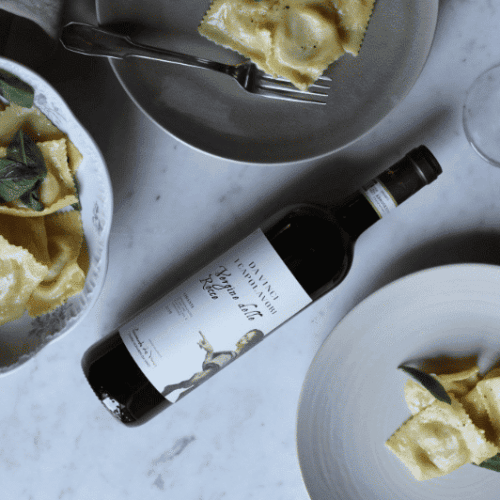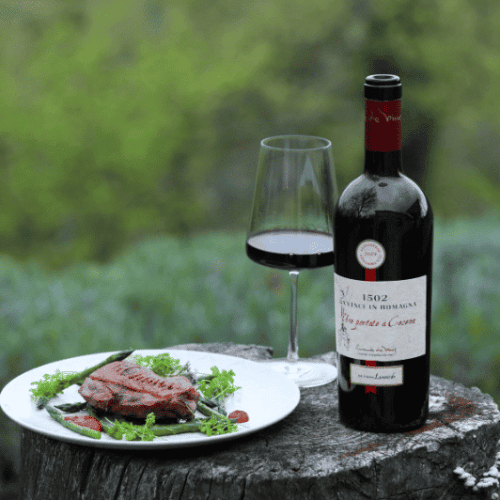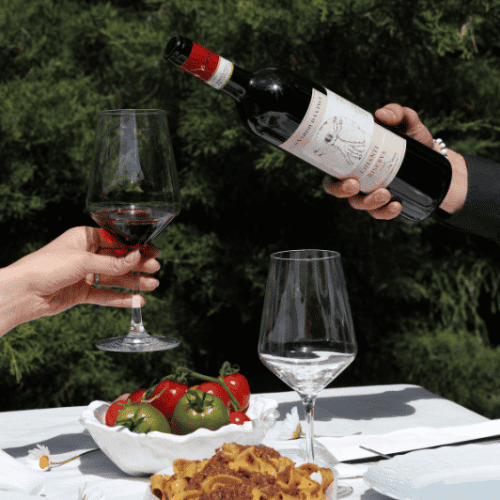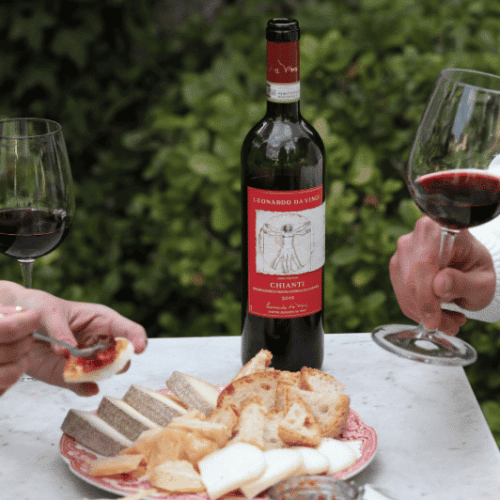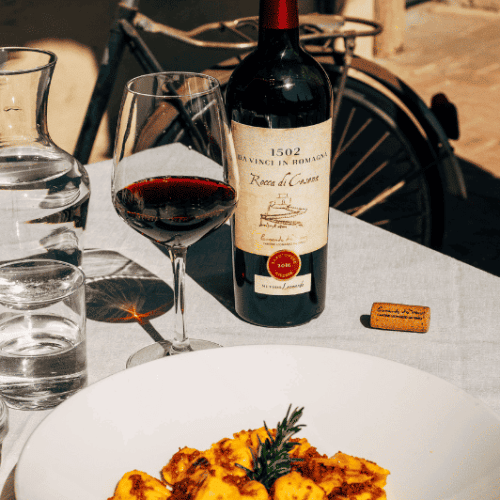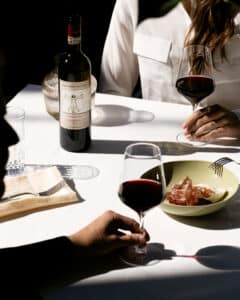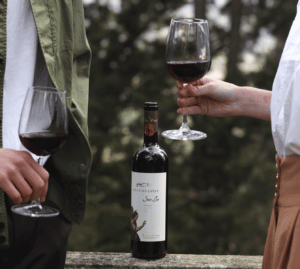Sangiovese is the most cultivated red grape variety in Italy, covering around 11% of the total Italian vineyard area. It is widespread in many regions from Emilia-Romagna to Campania, not to mention Tuscany where it is also known as “Sangiovese Grosso”, and is undoubtedly the most cultivated variety of all. This grape is used both in purity and as part of the blend for many Italian red wines, including the famous Chianti, Brunello and Rosso di Montalcino, Vino Nobile di Montepulciano, Morellino di Scansano, Rosso Piceno and Rosso di Montefalco to name a few.
Sangiovese: history of the wine
Sangiovese has very ancient origins. Experts claim the grape variety dates back to the Etruscan era, where it would have been cultivated between the Tiber and Arno rivers. From there it spread along the Italian peninsula, finding its favorite lands in Tuscany, Romagna and Umbria.
According to an ancient legend, it seems that the name “Sangiovese” derives from the words “Sanguis Jovis“, or “Blood of Jupiter“, a name given to it by a monk of the convent of Santarcangelo di Romagna, near Mount Giove, who served the “Sanguis Jovis” wine during a banquet in honor of Pope Leo XII.
Sangiovese: characteristics of the wine
As previously mentioned, Sangiovese is grown in different regions of Italy. Although there are distinctions between the terroirs and the areas of origin, there are similar characteristics that unite the various clones spread throughout the country.
Among the organoleptic characteristics that make it recognizable, there is its delicate floral bouquet of violet, iris, rose, which intertwines with equally fine fruity notes of black cherry and forest fruits. Woody hints are also easily found in the glass when the wine has been aged in wood, including the spicy aromas of vanilla, licorice, cinnamon, nutmeg and black pepper.
On the palate, its tannins are unforgettable, powerful and never too round. Flavors including flowers and red fruits emerge, boosted by its acidity that highlights the underlying nerve that is typical of Sangiovese.
Many of Cantine Leonardo da Vinci‘s red wines include Sangiovese grapes.
Among the most acclaimed wines is the Chianti of Cantine Leonardo da Vinci. This wine type is represented in both the Chianti DOCG and Chianti DOCG Riserva, according to the different lengths of the aging periods. These wines are present in two collections, respectively, the Leonardo da Vinci and Da Vinci I Capolavori.
In the Montalcino area, Cantine Leonardo da Vinci produces perhaps the noblest version of Sangiovese, Brunello di Montalcino, in two special wines: Brunello di Montalcino DOCG from the Leonardo da Vinci line and Brunello di Montalcino DOCG San Giovanni Battista. Both wines are faithful representatives of the most authentic expression of the Tuscan territory and the typicality of the grape variety that is known here as “Sangiovese Grosso”. These two Tuscan red wines offer pleasant, softened tannins as well as a strong fruity bouquet of blackberries, blackcurrants and cherries.
Another elegant and refined wine is the Toscana Rosso “San Zio”. Made from 95% Sangiovese and 5% Colorino grapes, its brief contact with oak enhances the aroma, color and aromatic breadth, while still respecting the native fragrance of the grape.
When it comes to Sangiovese di Romagna among the wines of the 1502 da Vinci in Romagna line, an excellent example would be the Sangiovese Superiore Riserva Romagna DOC, the “Rocca di Cesena“, and an interesting Appassimento version called “Uve Portate a Cesena”, which highlights the softness of the tannins thanks to the aging in wood, enhancing a more mature and persistent fruit.
Different from more structured red Sangiovese is the “Portocanale di Cesenatico” Sangiovese Rosé wine of the 1502 Da Vinci in Romagna line. The vinification of this wine involves a short maceration of a few hours on the skins to obtain the correct hue of pink that is typical of this wine. It is fruity with floral aromas and remarkably fresh.
Sangiovese: wine and food pairings
The most suitable food pairings for Sangiovese wine often make protagonists of the typical dishes of the regions where this wine is widespread. In Emilia-Romagna, Sangiovese is often combined with piadina flat bread and prosciutto, with tagliatelle pasta and ragu (meat sauce), as well as with a plate of baked lasagna. If Sangiovese is young and light, it can also pleasantly accompany grilled fish from the Adriatic Sea. In Tuscany, when it comes to Sangiovese, Chianti or Brunello, the most popular combination is that of the famous Tuscan Fiorentina t-bone steak. Other typical dishes of the regional tradition include liver crostini, Tuscan peposo or stewed game. Alternatively, Sangiovese is also excellent with aged cheeses such as Tuscan Pecorino or first courses such as pici pasta with garlic or pappardelle with wild boar sauce.

